人教版(2019)必修 第二册Unit 2 Wildlife Protection Reading and Thinking课件(共21张PPT)
文档属性
| 名称 | 人教版(2019)必修 第二册Unit 2 Wildlife Protection Reading and Thinking课件(共21张PPT) | 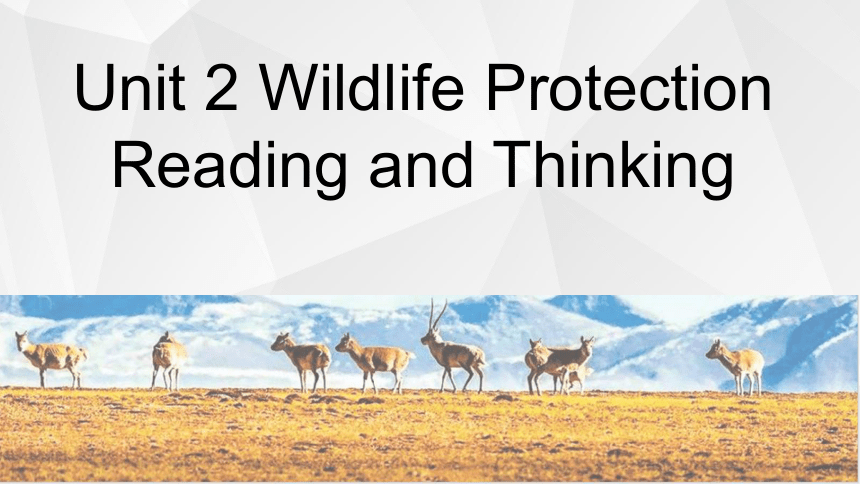 | |
| 格式 | pptx | ||
| 文件大小 | 11.3MB | ||
| 资源类型 | 教案 | ||
| 版本资源 | 人教版(2019) | ||
| 科目 | 英语 | ||
| 更新时间 | 2025-07-05 09:55:27 | ||
图片预览


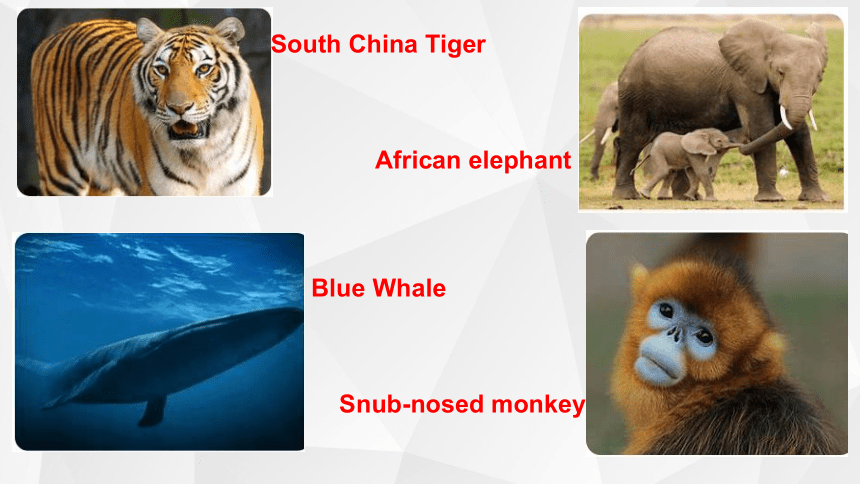
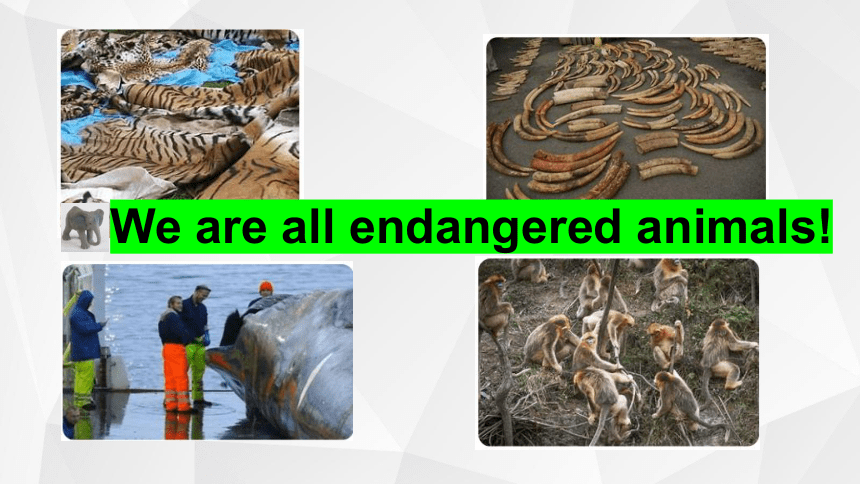
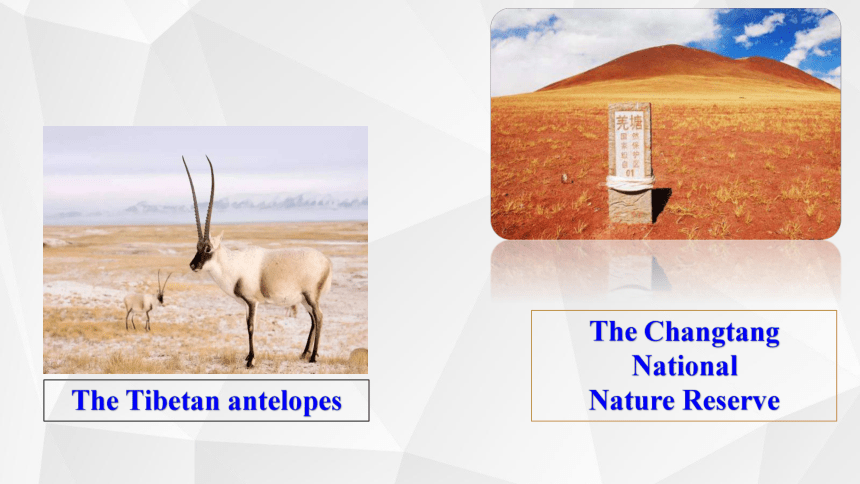
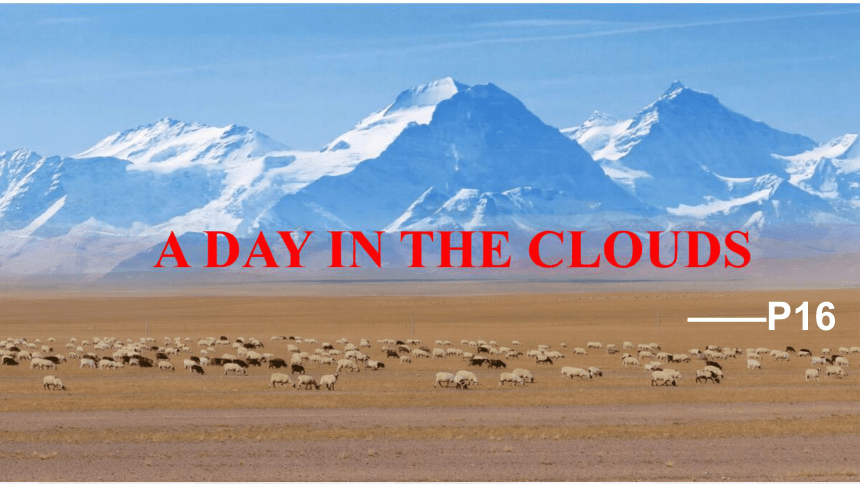
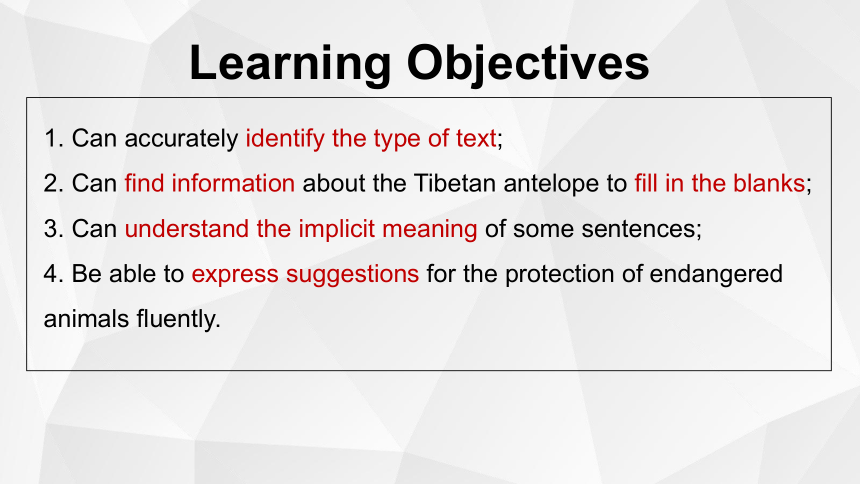
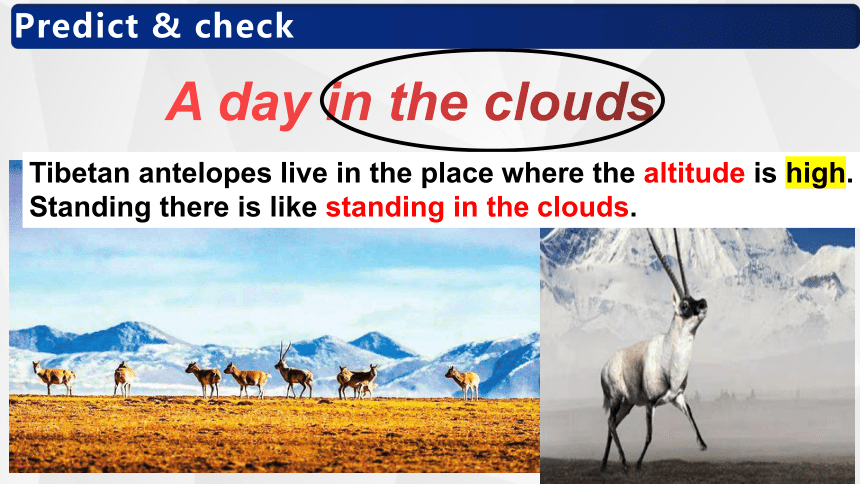
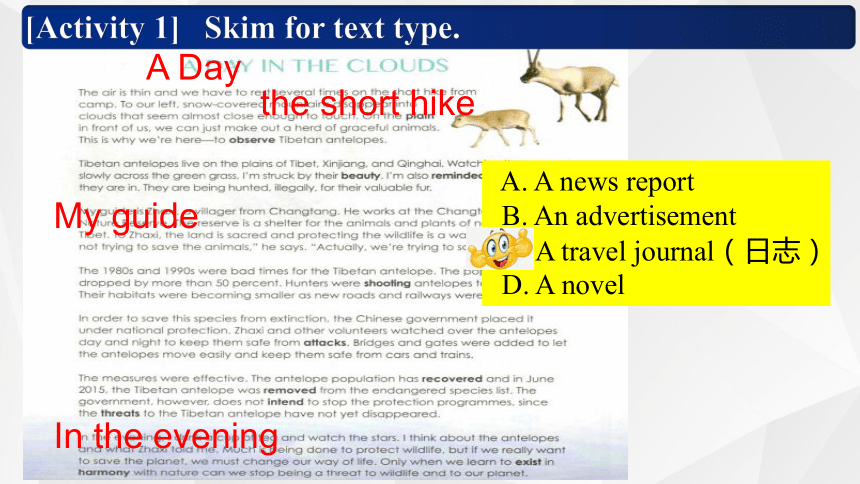
文档简介
(共21张PPT)
Unit 2 Wildlife Protection Reading and Thinking
Lead-in
South China Tiger
African elephant
Snub-nosed monkey
Blue Whale
We are all endangered animals!
The Tibetan antelopes
The Changtang National
Nature Reserve
——P16
Learning Objectives
1. Can accurately identify the type of text;
2. Can find information about the Tibetan antelope to fill in the blanks;
3. Can understand the implicit meaning of some sentences;
4. Be able to express suggestions for the protection of endangered animals fluently.
A day in the clouds
Tibetan antelopes live in the place where the altitude is high. Standing there is like standing in the clouds.
Predict & check
A. A news report
B. An advertisement
C. A travel journal(日志)
D. A novel
[Activity 1] Skim for text type.
A Day
the short hike
My guide
In the evening
While-reading
Para 1
Para 2
Para 3
Para 4
Para 5
Para 6
Para 7
The ________ of the Tibetan antelopes.
The ________ of our camping.
My guide, Zhaxi, working for _________ the wildlife.
The __________ for Tibetan antelopes.
The __________ taken to protect the antelopes.
The ______________ we’ve made and we also have _____________ to go.
Protecting wildlife is saving __________.
purpose
situation
bad times
protecting
measures
bad times
protecting
situation
purpose
measures
achievements
ourselves
a long way
achievements
ourselves
a long way
[Task 1] What's the main idea of each paragraph
A day in the Clouds
What the writer sees
What the writer hears
What the
writer thinks
para _____
para _____
para _____
1~2
3~ 6
7
[Task 2] How is the text organized
beauty of snow-covered mountains and graceful antelopes
Zhaxi, Changtang
bad times
measures
results
more to do
Protecting
Tibetan antelopes
Why
How
Results
More to do
What
Hunters _____________________
___________.
Habitats ___________________.
The government _____________
____________________.
Volunteers _________________
______________.
Bridges and gates ____________
___________________________.
The antelope population ____________.
In June 2015, they _________________
_______________________________.
Change ___________and exist___
___________
________.
[Task 3]
Tibetan antelopes live on the plains of _________________
___________.
They’re ________ animals.
They have ________ fur.
Tibet, Xinjiang, and
Qinghai
graceful
valuable
our way of life
were shooting them to
make profits
were becoming smaller
placed it under
national protection
watched them over
day and night
were added
to let them move easily and safely
has recovered
were removed
from the endangered species list
in
harmony with
nature
[Activity 3] Read deeper:
Explain the implied meaning of the sentences.
para.1 The air is thin and we have to rest several times....
snow-covered mountains disappear into clouds.
para.1 On the plain in front of us, we can just make out a herd of graceful animals.
It’s a place of high altitude(海拔)/ very cold there.
When we first saw the antelopes, they were very far away.
Para.2 Watching them move slowly across the green grass...
Now they are living safely and peacefully.
Group discussion
Group discussion
What should we do or change to protect endangered animals
Come up with your strategies and report it to the whole class.
(protecting animals, protecting the environment, saving natural resources)
Remember
No protection! No animals! No earth!
No human beings!
human beings
animals
environment
harmony
In order to live in harmony with nature, we teenagers can take the following measures.
1. As for protecting the animals, we can ...
2. Speaking of environment protection, the following things can be done. First,…What’s more/Moreover,…Finally,…
3. When it comes to saving natural resources, we think...is a good way.
Sentence patterns:
Homework
Task 1. Write down your report and polish it.
Task 2. Search the Internet to learn more about wildlife
protection.
suggested websites:
hhtp://www.cwca./
http://www.worldwildlife. org/species
Unit 2 Wildlife Protection Reading and Thinking
Lead-in
South China Tiger
African elephant
Snub-nosed monkey
Blue Whale
We are all endangered animals!
The Tibetan antelopes
The Changtang National
Nature Reserve
——P16
Learning Objectives
1. Can accurately identify the type of text;
2. Can find information about the Tibetan antelope to fill in the blanks;
3. Can understand the implicit meaning of some sentences;
4. Be able to express suggestions for the protection of endangered animals fluently.
A day in the clouds
Tibetan antelopes live in the place where the altitude is high. Standing there is like standing in the clouds.
Predict & check
A. A news report
B. An advertisement
C. A travel journal(日志)
D. A novel
[Activity 1] Skim for text type.
A Day
the short hike
My guide
In the evening
While-reading
Para 1
Para 2
Para 3
Para 4
Para 5
Para 6
Para 7
The ________ of the Tibetan antelopes.
The ________ of our camping.
My guide, Zhaxi, working for _________ the wildlife.
The __________ for Tibetan antelopes.
The __________ taken to protect the antelopes.
The ______________ we’ve made and we also have _____________ to go.
Protecting wildlife is saving __________.
purpose
situation
bad times
protecting
measures
bad times
protecting
situation
purpose
measures
achievements
ourselves
a long way
achievements
ourselves
a long way
[Task 1] What's the main idea of each paragraph
A day in the Clouds
What the writer sees
What the writer hears
What the
writer thinks
para _____
para _____
para _____
1~2
3~ 6
7
[Task 2] How is the text organized
beauty of snow-covered mountains and graceful antelopes
Zhaxi, Changtang
bad times
measures
results
more to do
Protecting
Tibetan antelopes
Why
How
Results
More to do
What
Hunters _____________________
___________.
Habitats ___________________.
The government _____________
____________________.
Volunteers _________________
______________.
Bridges and gates ____________
___________________________.
The antelope population ____________.
In June 2015, they _________________
_______________________________.
Change ___________and exist___
___________
________.
[Task 3]
Tibetan antelopes live on the plains of _________________
___________.
They’re ________ animals.
They have ________ fur.
Tibet, Xinjiang, and
Qinghai
graceful
valuable
our way of life
were shooting them to
make profits
were becoming smaller
placed it under
national protection
watched them over
day and night
were added
to let them move easily and safely
has recovered
were removed
from the endangered species list
in
harmony with
nature
[Activity 3] Read deeper:
Explain the implied meaning of the sentences.
para.1 The air is thin and we have to rest several times....
snow-covered mountains disappear into clouds.
para.1 On the plain in front of us, we can just make out a herd of graceful animals.
It’s a place of high altitude(海拔)/ very cold there.
When we first saw the antelopes, they were very far away.
Para.2 Watching them move slowly across the green grass...
Now they are living safely and peacefully.
Group discussion
Group discussion
What should we do or change to protect endangered animals
Come up with your strategies and report it to the whole class.
(protecting animals, protecting the environment, saving natural resources)
Remember
No protection! No animals! No earth!
No human beings!
human beings
animals
environment
harmony
In order to live in harmony with nature, we teenagers can take the following measures.
1. As for protecting the animals, we can ...
2. Speaking of environment protection, the following things can be done. First,…What’s more/Moreover,…Finally,…
3. When it comes to saving natural resources, we think...is a good way.
Sentence patterns:
Homework
Task 1. Write down your report and polish it.
Task 2. Search the Internet to learn more about wildlife
protection.
suggested websites:
hhtp://www.cwca./
http://www.worldwildlife. org/species
